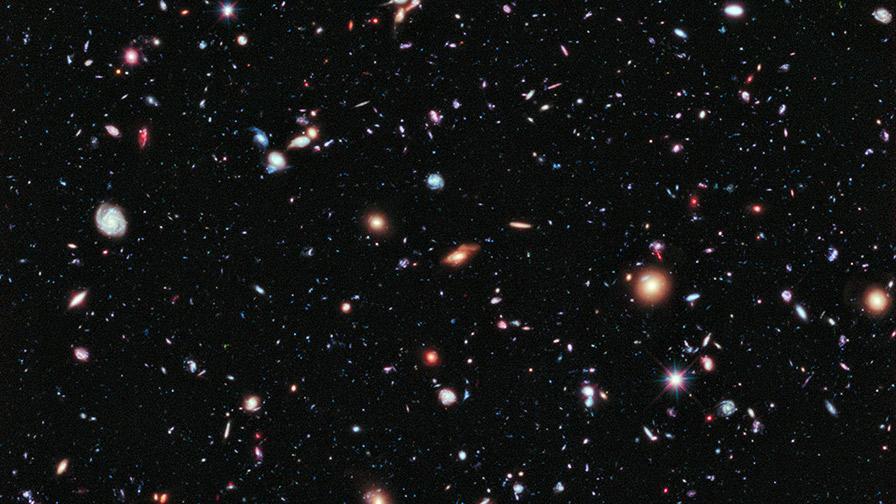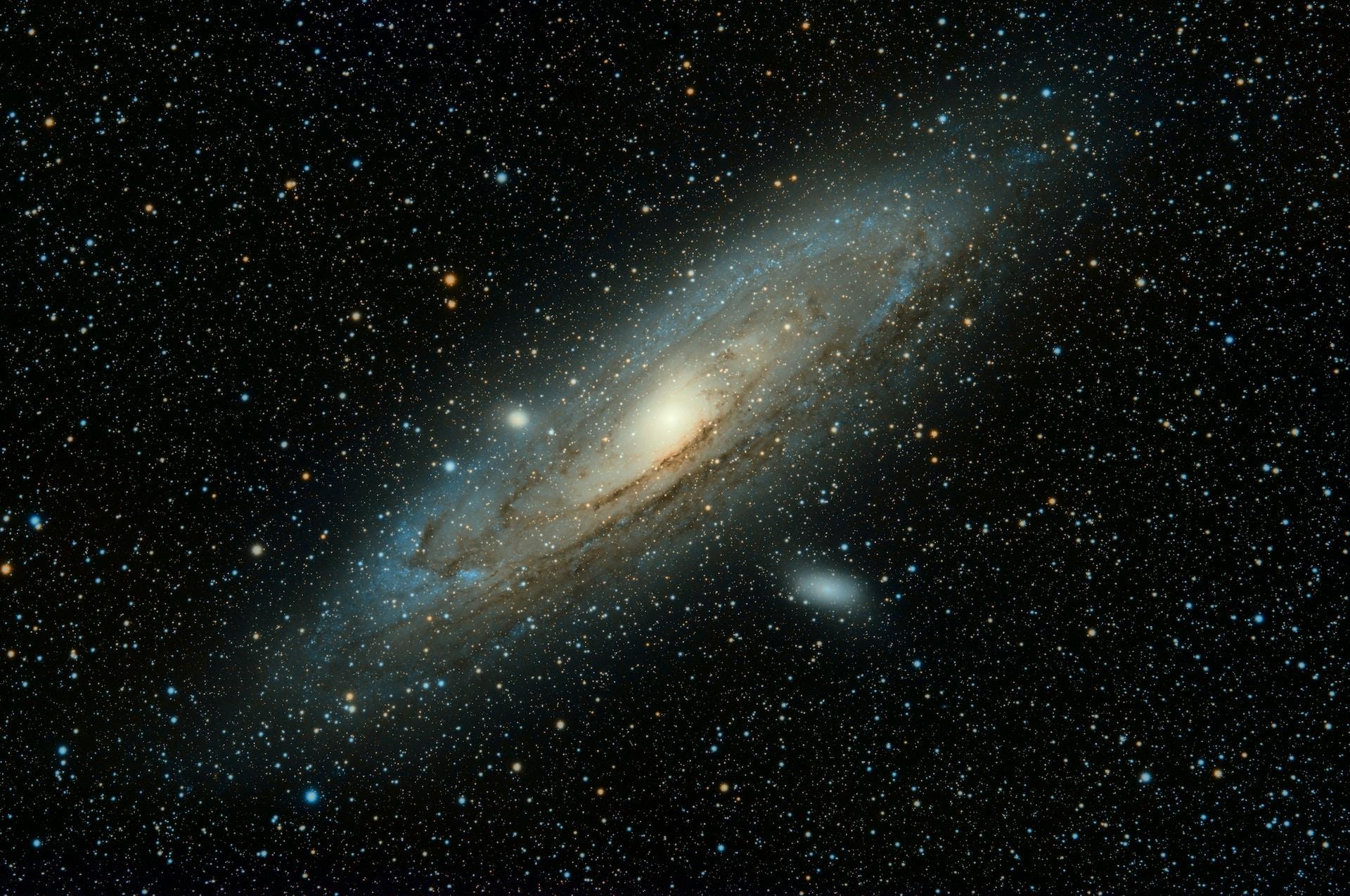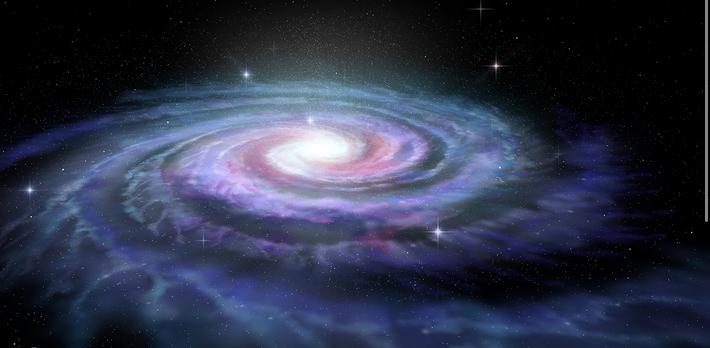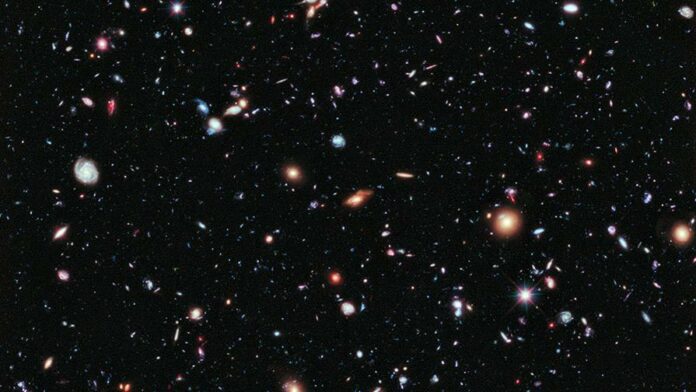In this article we are going to learn more about our universe and how it is formed and try to answer the question of why galaxies appear to be flat. Thankfully science is confident that it understands why so please read on.
How the Universe Was Created
In order to answer the question of why galaxies are flat we need to take a closer look at how our universe likely formed. The theoretical Big Bang event is a concept that exists in physics which describes a possible version of our universe expanding from an initial state of high density and temperature. The work of mathematicians and astronomers has combined for decades in trying to prove or disprove this theory based on our observable universe.
You are viewing: Why Is The Galaxy Flat

Expanding Outwards
Key to the idea of the Big Bang is an understanding that the universe is gradually expanding. In 1912 observations by Vesto M. Slipher indicated redshifting of the light from remote galaxies. This led to the theory that the galaxies may be receding from the earth or basically moving further away.
A decade later using Einstein’s field equations Alexander Friedmann was able to provide theoretical evidence that the universe was indeed expanding.
The Big Bang Process
It Starts with Cosmic Inflation
The theory suggests that at one point all the matter in the universe was held together in an area of infinite density and temperature. This was prior to the Bing Bang which in truth was more of an inflation outwards. Around 13.8 billion years ago it is thought that the universe began to expand outward from this dense mass.
The universe is thought to have expanded faster than the speed of light for a fraction of a second. This is a theoretical period known as cosmic inflation. Scientists aren’t sure what initiated this inflation or what may have powered it.
Cosmologists believe that inflation may explain a number of observable aspects of the universe as it is today. These include its flatness or lack of curvature.
Next the Big Bang and Nucleosynthesis
When this cosmic inflation stopped, the energy that was driving it is thought to have transferred to matter and light. This new abundance of matter and light is what is described as the Big Bang. In the second following the Big Bang it is theorized that the universe consisted of an extremely hot primordial soup of light and particles. This hot soup is estimated to have been 18 billion degrees Fahrenheit or 10 billion degrees Celsius.

Within minutes, an era known as nucleosynthesis began which saw protons and neutrons colliding to produce the earliest elements. These would include:
- hydrogen
- helium
- lithium
- beryllium
Read more : Why Did Eddie Leave Kickin It
After the first 5 minutes it is thought that most of today’s natural helium had been formed. The Initial expansion and cooling of the universe had also reached a point to where no further element formation took place.
The universe however was still too hot for the atomic nuclei of these elements to capture electrons which would be necessary for them to form complete atoms.
Recombination
It would take 380,000 years for the universe to cool enough for atomic nuclei to capture electrons. This is a period referred to by astronomers as the epoch of recombination. There would be two major effects of this, the cosmic fog of free electrons was cleared allowing the universe to become transparent. This would also allow light to travel freely over great distances.
The second effect was that the formation of these first atoms produced light energy. We can still detect the glow of the formation of these first atoms to this day. This glow is known as the cosmic microwave background.
The Universal Dark Ages
In human history we refer to dark ages as periods in which a nation sees no new advances. It is a period of little advancement in knowledge and perhaps even decline. Cosmically speaking the universe would enter a dark age after the cosmic microwave background was formed.
The hydrogen atoms would absorb the shorter wavelengths of the exiting light and as yet stars had not started to form. Over the next 200 million years our universe remained dark. It was simply a sea of hydrogen, helium and other trace elements in atomic form.
The First Stars
The gases of our universe were not spread out evenly and there would be so called clumps that had denser clouds of gas. As the clumps grew they would become denser and more compact. At the center of these dense clumps temperatures became hotter eventually leading to nuclear fusion.

This nuclear fusion essentially lit the stars which would have roughly been 30 – 300 times the size of our own star the sun. It would take several million years but eventually these new stars would collect together into galaxies.
Finally the Reionization Period
In the early lives of stars their light still could not travel far, relatively speaking, due to it being scattered by the dense gas clouds that surrounded them. However over time the ultraviolet light emitted by the stars would break down these clouds.
Read more : Why Does My Dog Kick Me
The UV light did this by ionization of the gas atoms breaking them into their constituent electrons and protons. With the progression this reionization allowed starlight to travel further and unobstructed. Within the first billion years the light given off by stars had transformed nearly all of the gas making the universe transparent and as we see it today.
What Is a Galaxy?
It is important to clarify before we answer the question regarding a galaxy’s shape, what exactly a galaxy is. Basically it is a system of stars, stellar remnants, gasses, dust and dark matter. It is bound together by gravity.
It is estimated that there may be over 200 billion galaxies in the observable universe and range on average between 3,000 – 30,000 light years in diameter. Our galaxy, the Milky Way, is roughly 87,400 light years in diameter meaning at light speed it would take us over 87,000 years to cross from one side of the galaxy to the other.
Why Are Galaxies Flat?
Invariably when we view galaxies through things like the Hubble telescope they appear stretched out and flattened in shape. If our universe is vast, why do galaxies appear this way? The answer is actually quite simple according to NASA.

Galaxies start life as huge balls of slowly rotating gas. As they begin to slowly collapse in on themselves their rotation becomes faster and faster. This turns the once ball-shaped mass of gases into a more stretched out pizza like shape. In fact you might even think of it spinning a fresh pizza dough in the way it stretches and flattens.
Essentially anything that may try to escape upwards or downwards is pulled back into the ensuing disc of the galaxy. The rotation is a very complex version of conservation of angular motion. A more basic version of this same theory would be spinning around in an office chair with your arms and legs out and then pulling your limbs in to reduce friction.
The galaxy compresses more as it speeds up and speeds up more as it is compressed. This creates the flattening effect we see.
It is important to note that some galaxies are flatter than others. Some may bulge out more while others may still be almost spherical. This does not mean these other galaxies will not eventually flatten because the same forces and laws of physics tend to apply.
Final Thoughts
The reason most galaxies appear to be flat discs is that their natural rotation increases as these galaxies start to collapse in on themselves. They are vast balls of gases and matter which are spinning due to a central gravitational pull. The galaxy tends to squash down and stretch out like a spun pizza dough in order to counteract friction as it rotates.
Source: https://t-tees.com
Category: WHY

